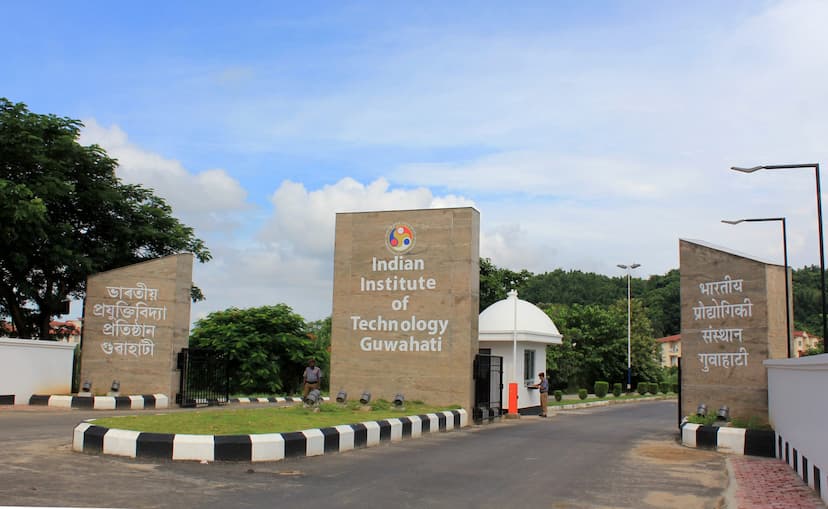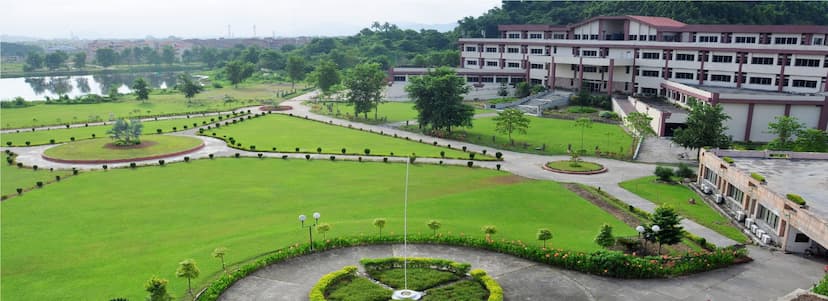IIT Guwahati invents great biodegradable low cost dressing film

IIT Guwahati researchers invented a bio-degradable low-cost composite transparent wound dressing film.
This material, based on the integration of a synthetic polymer, is non-toxic in nature and will create a moist environment that would enable the body to heal on its own through the endogenous enzymes, according to recent research.

The laboratory-scale development was found to be at least 50 percent economical in comparison with similar commercial materials, say IIT Guwahati researchers.
Cotton wool, lint, and gauzes are commonly used wound dressing materials, say sources from IIT Guwahati.
They are often deployed to manage the wound exudates and accelerate the healing process.
However, a major disadvantage of such materials is with respect to the painful removal exercises that can even damage a healed tissue.
Also read – Top 15 easiest exams in India


Further, their opaqueness becomes a critical issue for sensitive wound applications that demand periodic visualization based analysis and treatment procedures.
The research to address these issues was carried out by a team at the Department of Chemical Engineering, IIT Guwahati.

Some of the findings were published in the International peer-reviewed International Journal of Biological Macromolecules by Ms. Aritra Das (First Author), Ph.D. Scholar, Ms. Srirupa Bhattacharyya, Doctoral Fellow, IIT Guwahati, Prof. Chandan Das and Professor Ramagopal V.S. Uppaluri, Faculty in the Department of Chemical Engineering, IIT Guwahati.
Also Read – Top 15 most toughest exams in world

Few of these have been outlined as follows:

Ø Low-cost: In addition to their biodegradability that counters environmental hazards, the mentioned films are easy for people to afford.
Ø Biocompatible: Prevent any kind of toxicity that counters and hampers the growth of cells, tissues and natural healing processes.
Ø Transparent: To provide wound observation without changing the dressing materials.
Further, ease of removal can be addressed due to the controlled moist environment being facilitated by the material.
Thus, the transparent film can be easily removed.
Visit Now – IIT Madras is collaborating with VIT Chennai
Ø Super absorbent: To prevent wound exudate accumulation on the wound surface which may lead to the maceration of the newly generated tissue.
Ø Adequate mechanical characteristics: To provide existence under a huge flow of exudates and ability to adjust with the shape of the wound to prevent scar formation in due course of healing

PhD scholar at IIT Guwahati Ms. Aritra Das highlighted about the unique aspects of this research.
‘This invention of IIT Guwahati has the potential to make a huge impact on the field.’
Also read ‘IIT Madras is inviting applications for Online course in Data Science. Apply before 30 August‘
It emphasizes upon the integration of a synthetic polymer namely polyvinyl alcohol (PVA) with a natural polymer starch (St) to eventually achieve a low-cost, biodegradable, non-toxic and transparent composite hydrogel, said Aritra Das of IIT Guwahati.
IIT Guwahati has created the knowledge framework and associated protocols for successful identification and optimization of polymer hydrogel films for the probable wound dressing applications.
Such customized and effectively designed novel materials provide the necessary hope to address issues such as biodegradability of synthetic polymer-based materials, cost of raw materials and processes, utilization of expensive natural polymers to achieve functional materials, and biocompatibility of developed products, among others.

Professor Chandan Das of Department of Chemical Engineering at IIT Guwahati spoke on how this invention will have an impact in the real world.
‘The product has potential to prevent bacterial invention even after it gets swelled under a hydrolytic environment and loses its occlusivity.’
The steady weight loss characteristics presented by the polymer network provides essential release of the components, especially citric acid which secure the protection barrier, said Professor Chandan Das of IIT Guwahati.
Apart from providing an adequate environment towards the growth of the wounded cells, the leached components from the composite as well assist towards the accelerated growth of the healthy cells and tissues.
The laboratory achieved film constitution can be further targeted towards in-vivo characterizations and needful scale-up investigations.

Professor Ramagopal V.S. Uppaluri, Department of Chemical Engineering, IIT Guwahati further, elaborated on the current status of the research and how it can be taken to the field.
‘The carried-out research has been in an experimental and table top research environment that needs furthering studies towards scale up as well as in-vivo analysis (real world applications).’
Among these, the scale up related studies can be addressed after targeting the in-vivo analysis using specimens such as wounded rats, said Professor Ramagopal.
The laboratory scale-based retail cost of the optimized CA-based PVA-St composite hydrogel film has been about ₹ 0.188/cm2, which is about 66 percent inexpensive in comparison with similar commercial materials that costs ₹ 0.565 /cm2

Compared to the CA-based PVA-St composite hydrogel film, the recently invented MA-based similar film has been about 4.56 percent inexpensive.
Read More – Top 15 most toughest exams in India
S Vishnu Sharmaa now works with collegechalo.com in the news team. His work involves writing articles related to the education sector in India with a keen focus on higher education issues. Journalism has always been a passion for him. He has more than 10 years of enriching experience with various media organizations like Eenadu, Webdunia, News Today, Infodea. He also has a strong interest in writing about defence and railway related issues.









